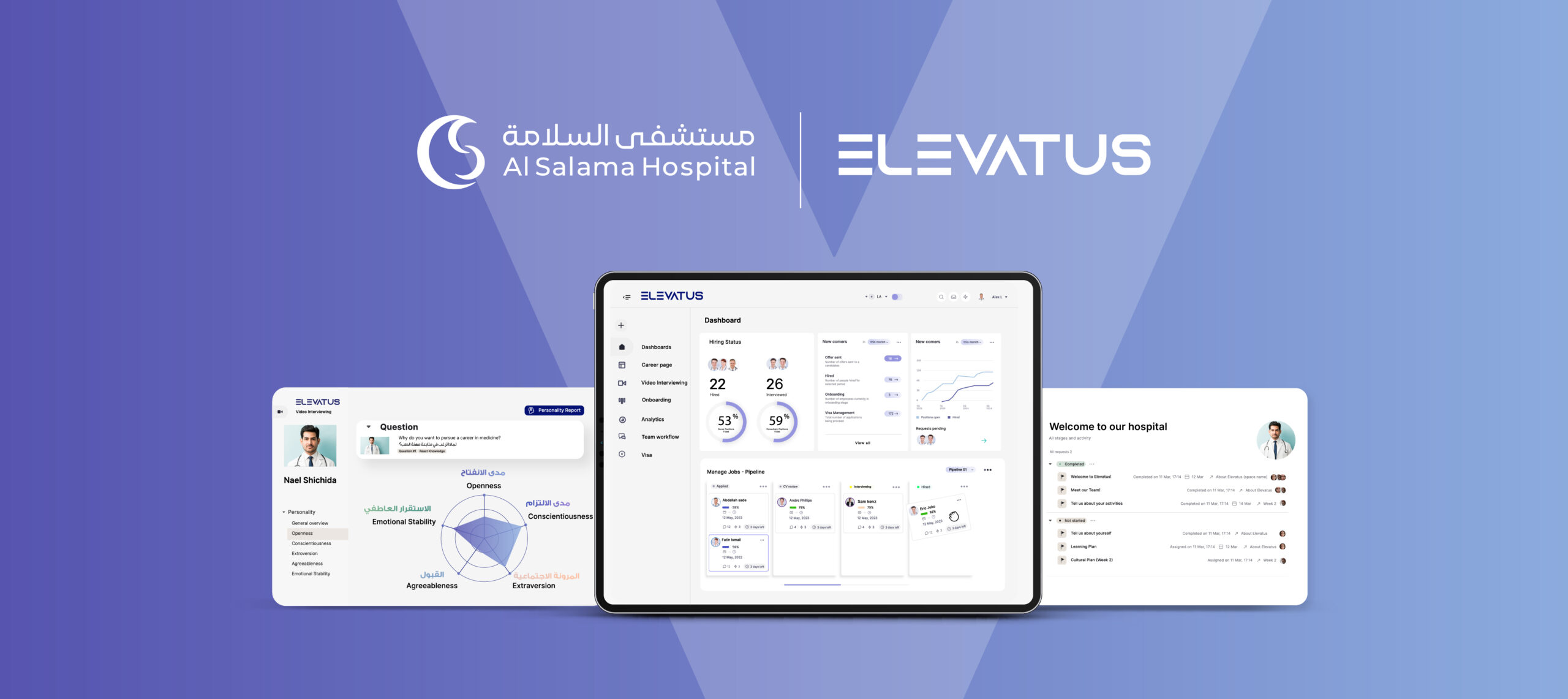
Video Assessment Interview
Taking the Guesswork Out: 10 Initial Assessment Methods for Hiring the Best Talent
September 25, 2023



Kiran Kazim
Content Writer
Every time you’re faced with the challenge of hiring a new team member, it feels like you’re venturing into a labyrinth of choices, doesn’t it? The world of recruitment is complex, but fear not; there are proven strategies to ensure you’re on the right track. By leveraging key assessment methods, you can filter out the guesswork and home in on the cream of the crop.
Let’s unpack the top 10 approaches to ensure you’re bringing the best talent aboard.
Skip the Regret: How Smart Hiring Choices Power Up Your Business


In the dynamic landscape of business, making informed hiring decisions is paramount. Every new hire has the potential to either propel a company forward or derail its progress. With the stakes so high, relying on intuition alone is no longer sufficient.
Enter the world of assessment methods for hiring. These tools and techniques provide a structured approach to evaluating candidates beyond just their resumes and interviews. Initial assessment methods for hiring act as a sieve, filtering out the most promising candidates based on skills, competencies, and cultural fit. These assessment methods in hiring have evolved over the years to be more sophisticated and targeted, ensuring that organizations make data-driven decisions.
By integrating assessment methods used in the hiring process, companies can significantly reduce the chances of costly hiring mistakes and ensure that every new addition to the team aligns with the company’s vision and objectives. The right assessment can truly be the game-changer in the quest for talent acquisition.
Beyond Resumes: 10 Proven Assessment Techniques to Snag Top Talent


In the digital age, businesses face a paradox: while they have access to a broader pool of potential candidates than ever before, the process of identifying truly exceptional talent becomes more complex. Leveraging the right initial assessment methods for hiring can mean the difference between an organization that thrives and one that struggles. Here, we delve into the top 10 assessment methods in hiring that can refine your talent acquisition process.
1. Mastering the Art of Decoding Resumes
Every hiring process starts with an influx of resumes. But how do you determine which ones are worth pursuing? This initial assessment method for hiring requires a keen eye for detail. Reviewing educational background, experience, and gaps in employment can give preliminary insights. This method not only identifies potential fits but also spots red flags early on.
However, truly leveraging its potential requires a nuanced approach, where each line can reveal more than just facts, painting a comprehensive picture of the candidate’s journey, aspirations, and potential fit for the organization.
2. How Cognitive Ability Tests Spotlight Top Candidates
Cognitive ability tests gauge a candidate’s problem-solving skills, analytical thinking, and ability to learn and apply new information. These tests are some of the most predictive assessment methods for hiring, offering a glimpse into how a candidate might handle complex tasks and challenges in their role.
One significant advantage of these tests is their wide-ranging applicability across various industries and job levels. Whether it’s an entry-level position or a high-tier managerial role, cognitive abilities like problem-solving and analytical thinking are universally sought after. By assessing these competencies, employers can determine a candidate’s potential to navigate the multifaceted challenges they might encounter in their role.
3. Using Personality Assessments to Uncover the Perfect Fit
While skills and experience are crucial, a candidate’s personality can be a significant determinant of their success in a role. Personality assessments help employers understand intrinsic traits, motivations, and how a potential hire might interact with a team or handle workplace stress.
For example, an innovative video interviewing software like EVA-SSESS offers recruiters scientifically validated personality reports for each candidate. This report is generated after each candidate conducts a one-way video assessment. What does it reveal? You can easily predict an applicant’s job performance, communication style, and preferred learning method – and find out what drives them to succeed.
It’s not about finding the “right” personality, but the one that aligns with a specific role and company culture.
4. Skills Tests to Identify the Best of the Bunch
Specific roles require specific skills. Whether it’s proficiency in a particular software or hands-on technical know-how, skills tests are tailor-made assessment methods used in the hiring process to gauge competency in critical areas. This method provides tangible evidence of a candidate’s abilities, going beyond what’s mentioned in their resume. A candidate might list a plethora of software programs or tools they’re familiar with, but without a skills test, it’s challenging to determine their level of expertise or efficiency in using those tools.
Skills tests bridge this knowledge gap by presenting candidates with practical tasks or challenges they would likely face in their day-to-day role, allowing employers to evaluate proficiency, speed, accuracy, and problem-solving abilities in real-time.
5. How Situational Judgment Tests Reveal Top Performers
Real-world scenarios provide insights into how a candidate might respond in job-related situations. Situational judgment tests present hypothetical, job-related situations, where the candidate’s responses give a clue to their judgment, problem-solving, and interpersonal skills.
For example, you’re hiring for a customer service role. An SJT might present a scenario where a customer is furious because they received a defective product. The test might ask the candidate to rank different responses from most to least effective, such as:
A. Offer an immediate refund without questions.
B. Listen to the customer’s grievances before suggesting a solution.
C. Tell the customer it’s company policy not to offer refunds for opened products.
D. Apologize and ask the customer what they’d like as a resolution.
Depending on the company’s values and priorities, there might be preferred responses. For instance, a company that prioritizes customer satisfaction might favor candidates who choose option B or D.
6. Behavioral Interviews to Unmask Authentic Talent
Past behavior is often the best predictor of future performance. Behavioral interviews focus on asking candidates to describe previous situations where they demonstrated particular behaviors or skills. This assessment method for hiring delves deep, allowing the interviewer to understand not just what the candidate did, but how and why they did it.
7. How Job Simulations Offer a Glimpse into Future Performance
One of the most hands-on initial assessment methods for hiring, job simulations, places the candidate in a controlled, role-specific scenario to observe how they perform. This could range from sales pitches to coding challenges. It’s an excellent way for employers to see a candidate in action before making a hiring decision.
What makes job simulations particularly valuable is their authenticity. In traditional interviews, there’s always the possibility of candidates providing rehearsed or exaggerated answers. However, simulations require on-the-spot thinking and problem-solving, offering a more genuine snapshot of a candidate’s skills, adaptability, and decision-making prowess.
8. Unraveling Potential with Critical Thinking Assessments
In a rapidly changing work environment, the ability to think critically is invaluable. Critical thinking assessments measure a candidate’s ability to analyze information, reason logically, and derive valid conclusions. It’s not just about finding a solution but understanding the most efficient and effective way to reach it.
Critical thinking goes beyond mere problem-solving; it involves evaluating different angles of a situation, understanding underlying assumptions, and predicting potential outcomes. It’s a skill that intertwines analytical prowess with creativity, ensuring decisions are not just practical but also innovative.
When candidates undergo critical thinking assessments, they’re often presented with complex scenarios or problems, devoid of context or with excess information. These are specifically designed to evaluate how well an individual can discern relevant from irrelevant information, recognize biases or fallacies, and propose solutions that are both practical and forward-thinking.
9. Assessing Cultural Fit for Seamless Team Integration
A candidate can be exceptionally skilled, but if they don’t align with the company’s values and culture, friction can arise. Cultural fit evaluations ensure that hires not only contribute to the tasks at hand but also to the organization’s overall environment and vision.
To assess cultural fit, many organizations adopt a variety of methods. Behavioral interview questions, for instance, can probe into how a candidate has navigated situations in the past and whether their approach aligns with the company’s values. Some companies also incorporate situational judgment tests or even invite candidates for team interactions to see how they gel with potential colleagues.
10. Work Sample Tests to Witness Potential in Action
Show, don’t just tell. Work sample tests require candidates to complete actual work tasks they would face in their potential role. This assessment method in hiring is among the most direct ways to judge a candidate’s suitability, as it provides a genuine snippet of their potential performance on the job.
In a nutshell, the myriad of options available for candidate assessments means companies have a better chance than ever to make informed decisions. By integrating multiple assessment methods used in the hiring process, organizations can achieve a holistic understanding of a candidate’s potential, ensuring the best talent acquisition in every role. Remember, the initial assessment is more than just a gateway; it’s the foundation for building a talented, cohesive, and successful team.
The importance of using a mix of assessment methods for a holistic evaluation. The need for ongoing evaluation of assessment methods. Encouraging employers to adopt a strategic approach to candidate evaluation.
The Strategic Blueprint for Comprehensive Candidate Assessment


In the intricate dance of talent acquisition, relying on a singular approach is akin to looking through a narrow lens. Embracing a mix of assessment methods for hiring provides employers with a panoramic view of a candidate’s capabilities, character, and cultural fit. A resume might demonstrate expertise, but situational tests or behavioral interviews might unveil soft skills and adaptability.
While initial assessment methods for hiring offer a primary sieve, it’s the combination that provides a comprehensive evaluation. However, as industries evolve and job roles transform, the efficacy of these assessment methods in hiring may shift. Hence, there’s an imperative need for ongoing evaluation and recalibration of these tools. For companies striving for excellence, it’s vital to adopt a strategic approach, ensuring that the assessment methods used in the hiring process remain relevant, efficient, and holistic, matching the dynamism of today’s job market.
Final Thoughts
The role of comprehensive and adaptable assessment methods in hiring cannot be understated in this rapidly evolving professional world. They not only streamline the hiring process but ensure that each recruit resonates with the company’s ethos, skills, and vision. As businesses continue to diversify and grow, the tools and techniques used for talent acquisition must keep pace. By adopting a multi-faceted approach to evaluations and consistently revisiting and refining assessment strategies, organizations pave the way for informed decisions, optimized team dynamics, and sustained success.
Looking to prevent unsuitable hires and elevate your evaluation methods?
EVA-SSESS is an on-demand AI video interviewing software that assesses thousands of applicants remotely in one single click. Designed for companies across the globe, it offers an unbiased platform to discover, assess, nurture, and onboard top-notch talent swiftly, trimming down your screening time by a staggering 90%! See the transformation in action – Schedule your free demo now!
Turn top talent to employees fast
Hire, assess, onboard and manage top talent for every job. See how Elevatus streamlines everything; from acquire to new hire.
Request a demoAuthor



Kiran Kazim
Don't miss a thing!
Stay one step ahead. Subscribe and get the latest updates, news, and insights from Elevatus straight to your inbox.


![10 Best Video Interview Software for Faster Hiring [Free + Paid] | Elevatus An image of a woman giving an interview using best video interview software](https://www.elevatus.io/wp-content/uploads/2023/08/1-24.png)



